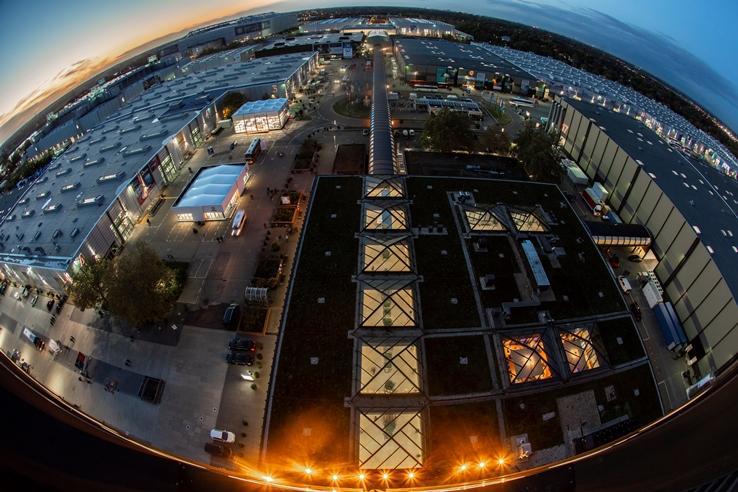
Blick vom Verwaltungsgebäude der Messe Düsseldorf auf das Messegelände. View from the administration building of Messe Düsseldorf to the exhibition grounds.
Plastics have followed a long and winding road since 1907, when Dr Leo Bakeland created the world’s first entirely synthetic plastic called Bakelite.
Development progressed rapidly up to and including the war years, with a huge number of innovations between 1933 and 1945. Post war, the focus was on commercialization of plastics. Polyester was introduced in the 1950s, and polypropylene – one of the most used polymers in the world – came to the market in 1954 – a year after the first K Show.
Automotive Industries (AI) asked Thomas Franken, Project Director, Plastics and Rubber, K Show 2022, Messe Düsseldorf, what are some of the technological milestones K has witnessed through its 70 editions.
Franken: K in Düsseldorf is witness to a true success story. At the premiere of K in Düsseldorf in 1953, the plastics and rubber industry itself was just getting started. And so, at that time, things that were supposed to make everyday life more beautiful and more comfortable were the center of attraction, like colorful plastic tableware, PVC raincoats and gauzy nylon stockings.
The fair was open to the general public at that time. As early as 1963, K became a special-interest trade fair for professionals. This was because the plastics industry was rapidly spe
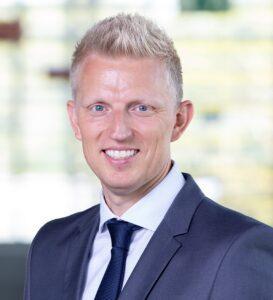
cializing and, in addition to standard polymers, more and more high-tech plastics for special solutions were presented in Düsseldorf, attracting attention in electronics, medicine, automotive engineering and aerospace.
For a long time, the industry concentrated on permanently increasing the performance of machines and a continuous increase in production for more and more areas of application. This millennium, an important and highly exciting change is taking place in the industry, which became particularly clear at K 2019.
The industry is now not only taking responsibility, but also taking the lead on issues as important as climate protection for example. At last K the industry underscored the need for a functioning circular economy along the entire resource chain and already presented concrete solutions. After all, plastic continues to be an innovative, indispensable and forward-looking material. It offers low-emission and energy-saving efficient processes and technologies.
Without it, resource conservation and sustainability would be impossible. Climate protection, circular economy and digitalization are therefore the three hot topics at K 2022 and will be omnipresent in the solutions of the exhibiting companies.
AI: How will K 2022 help promote the circular economy?
Franken: K has explicitly chosen circular economy as one of its three hot topics. The new K online magazine called K-Mag, already contains a wealth of news, articles and international best practice examples on the circular economy to raise awareness of the topic, contribute to know-how transfer and encourage the global K community to discuss and network. This will culminate at K in the fall.
K 2022 offers ideal conditions for intensive global networking and joint projects. Because nowhere else does the plastics and rubber industry gather in one place with such a hig
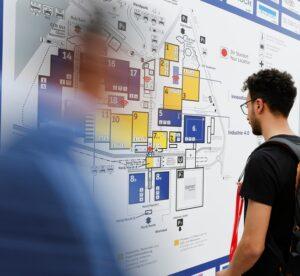
h level of internationality.
And the topic of circular economy will not only be in focus at the exhibitors stands, but will also take up a lot of space at the specials of K 2022.
First and foremost: the official special show with the title “Plastics Shape the Future” in Hall 6. This special show is jointly organised by PlasticsEurope Germany and Messe Düsseldorf. In panel discussions and lectures, industry experts will show how plastics can shape a sustainable future, which developments are already emerging today, and which visions have a chance of being realized tomorrow.
Another highlight on this subject will also be the Circular Economy Forum, which can be found on the outdoor space between Halls 10 and 16 at K 2022. There, 13 member companies of the VDMA (German Engineering Federation) will make the circular economy tangible and showcase the topic in its entirety. In addition, daily panel discussions on various aspects and challenges of the circular economy take place in the dome of the Circular Economy Forum.
AI: What will visitors learn about advances being made in climate protection?
Franken: The topic of climate protection is closely linked to the topic of Circular Economy. It is high time to replace fossil raw materials with recyclable materials with a significantly lower carbon footprint.
Plastics also help to reduce emissions in other important sectors such as construction, automotive, packaging and medicine. And they are essential for the development of renewable energy technologies. The industry does not yet have an answer to all the challenges. K 2022 will see more intensive and effective collaboration with the value chain and political decision-makers at an international level, especially in the K Specials and their discussion panels.
AI: Where does digitization fit into these trends?
Franken: One important topic is the digitally networked monitoring of raw material and product flows in the production area, also industry-wide across company boundaries. Some links to the circular economy and climate protection can also be identified here.
The digital connection of production chains must be advanced to make the processing of reyclates easier to handle. Furthermore, the introduction of a digital product pass is required. In order to achieve a true circular economy for plastic packaging a traceability standard is required that captures all recycling-relevant data from the manufacturing process.
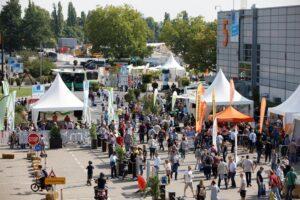
This digital product pass must by accessible by a product marking at the end of the lifecycle. This allows waste sorting systems to identify fully recyclable packaging using standard detection technologies. In the recycling process, single-origin products that provide detailed information about the exact composition are the key to high-quality recyclates for real recycling.
K 2022 can and will provide essential impetus for this. The Special “Plastics Shape the Future” will dedicate an entire theme day to Digitization.
AI: How is the automotive industry catered for at K 2022?
Franken: Plastics have become indispensable, especially in automotive engineering. The trend toward e-mobility opens up new design options for manufacturing their vehicles that would not be possible without plastics.
The interior of a car already consists mainly of plastic materials. The situation is different for the exterior, where there is still a lot of potential for polymer materials.
It’s not just about further weight savings, but also about a completely new design with integrated functionalities.

In the technical area of an automobile, for example, electrically conductive, permanently antistatic and shielding plastics are increasingly in demand. With increasing automation, a large number of sensors such as radar, lidar, IR or ultrasonic sensors are also finding their way into the vehicle. Tailor-made plastics are also used here.
I think we will see a whole range of innovative plastics and solutions specifically for the automotive sector at K 2022.
AI: K has seen the introduction of ground-breaking technologies over the past 70 years. What can visitors expect in 2022?
Franken: K 2022 will show how the plastic and rubber industry is undergoing a transformation process. Its innovative power is more breathtaking than ever before and more important than ever to help solve the major problems facing the world’s population, such as climate protection and resource conservation.
But K in Düsseldorf is also the world’s No. 1 trade show, because nowhere else are so many world premieres shown as in Düsseldorf. Therefore, the exhibitors are keeping the secret about their innovations until the start of K 2022, so we all have to eagerly await October 19th when K 2022 opens its doors.








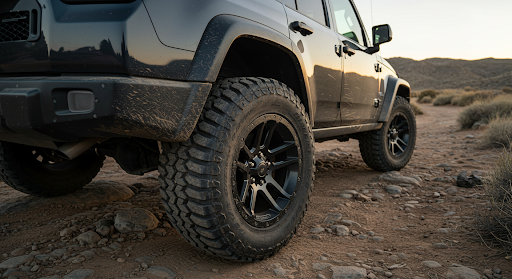
More Stories
Towing Services Explained: 6 Key Facts You Need to Know
Environmental Factors That Influence Ceramic Coating Choices
Professional vs. DIY Tinting: What You Should Know